Step-by-Step Guides and the 3-Question Tool for Better Jeans Washing Guidance (for Retailers)
To wash or not to wash? And how?! Those are questions many jeans shoppers are asking these days. And you can’t really blame them with all the confusing and sometimes conflicting advice out there.
If you work in a store where you sell jeans and you don’t provide the right washing guidance for your customers, you can get in real trouble.
Visit our buying guides before your next purchase. We guide you to the best raw selvedge jeans, denim jackets, heavy flannels, T-shirts, denim shirts, and more.
This guide is the second episode of the series about buying jeans. It gives you step-by-step instructional tips for how to hand- and machine-washing your jeans. To teach you how to use this knowledge, I’ve built the ‘3-question tool for better jeans washing guidance‘ that helps you determine what kind of washing advice your customers need.
The four episodes of the series about buying jeans are:
- How to buy “perfect” jeans
- How to wash your jeans (this post)
- How to find the perfect fit
- How to repair your jeans
When and How to Wash Your Jeans
When I was growing up, my jeans were washed every week or so. I’d wear them 3 or 4 times before I’d throw them in the laundry basket. And I didn’t think twice about it. But you don’t need to wash your jeans that often. All that water, detergent and spinning wears out the garment.
When I got into raw denim back in 2007, I was told to wait at least six months before I could wash my jeans. That didn’t really work for me either. Waiting too long before you wash your raw denim jeans makes the fibres brittle, which means they can break prematurely.
Today, I’ve found a middle ground between the two extremes. I have this very simple approach to when to wash my jeans:
Wash. When. Dirty.
… the only exception being that if I haven’t gotten my jeans dirty for 2 or 3 months, I’ll wash them anyway.
Hand-Picked Must-Haves and Essentials
Sorry to interrupt your reading but we’ve found these products that we really think you should take a closer look at!
Support us when you shop: We earn a small commission when you buy from these merchants.
Like most denimheads, I’m a sucker for high-contrast fades. That’s why I usually only wash my jeans when they really need it, which is not all that often. Yet I also like them to last as long as possible, and I love how the denim looks after a couple of washes. And that’s why I wash them at least every 2 or 3 months, even when they aren’t dirty.
My washing routine is pretty simple:
I always soak my jeans before I start wearing them, which removes some of the starch to make them a little softer. And that means they’ll last a bit longer. It also means the fades may get a little less pronounced. But I’m okay with that.
When the jeans get dirty or smelly, or if they haven’t been washed for a while, I either hand- or machine-wash them. If they’re really dirty, I usually machine-wash. Otherwise, I hand-wash. It also depends on what kind of fade I’m trying to achieve. For high contrasts, postponing the first machine-wash a long as you can is generally better.
Below I’ve outlined how to do each method step-by-step.
The 8 Steps of Hand-Washing Jeans
- Turn the jeans inside out!
- Fill your sink or a bucket with lukewarm water.
- Add ½ cup (1dl) of white vinegar* (the clear kind). [Optional]
- Add a little non-bleach detergent**, preferably liquid, and blend it with the water. [Optional]
- Wash the jeans for a few minutes and gently remove any spots without excessive rubbing. Then let them soak for 30-60 minutes.
- Drain the water and rinse the jeans thoroughly.
- Put the jeans in the washing machine and run a ‘spin only’ programme (max 900 rpm***). [Optional]****
- Turn the jeans right-side out and line dry. Alternatively, you can also flat dry the jeans. Do not tumble dry*****.
Hand-washing is the most gentle washing method. It’s great if you want to keep the denim dark and ‘raw’ as it usually doesn’t remove a lot of indigo from the denim (although that depends on the denim).


It’s also the best approach to shrinking down unsanforized jeans as it gives you more control compared to machine-washing. Just remember to skip step 3 when you do the initial soak (i.e. don’t add detergent).
The 5 Steps of Machine-Washing Jeans
- Turn your jeans inside out!
- Put the jeans in the washing machine and select a ‘delicate’ programme with a spin cycle of 900 rpm*** or less.
- Add an appropriate amount of non-bleach liquid detergent**.
- Add ½ cup (1dl) of white vinegar* to the rinse cycle compartment of the washing machine. [Optional]
- Once the wash is done, take out the jeans immediately, turn them right-side out, straighten out any creases and line dry. Do not tumble dry*****.
Machine-washing requires less effort than hand-washing. It’s a little tougher on the denim, but a delicate cycle on a good washing machine will almost be like hand-washing.
But, be aware that machine-washing generally removes more indigo from the denim compared to hand-washing.
Notes to Both Washing Methods
*Vinegar prevents colours from fading. Indigo is a so-called unstable dye. So is sulfur, which is what’s used to make black and coloured denim. When washed, the colour of unstable dyes bleeds as the dye releases pigmented mineral compounds. Vinegar absorbs and neutralises these minerals. It also works as a biodegradable fabric softener. And it kills bacteria.
**Use a detergent for delicate or black fabric without bleach.
***High rpm spinning creases your jeans, which can lead to unwanted vertical faded streaks.
****The spin cycle might cause a slight indigo loss, and give the jeans a ‘rinsed’ look. If you want the denim to stay as dark and as ‘raw’ as possible, avoid step 7 of hand-washing.
*****Tumble drying shrinks your jeans and dulls the colour. Only tumble dry if you can accept this.
This advice is handy when you’re in doubt about how to wash your jeans. And it’s something you should know if you work in a store that sells jeans. But why did people’s laundry habits become something you read about in the news?
How Jeans Washing Guidance Became Clickbait
Knowing how to wash your jeans has been relevant consumer knowledge ever since the very first blue jeans were made. But the reason sales clerks would advise you about how to wash your jeans 150 years ago were mainly a matter of practicality.
You see, before 1930—that’s when the first jeans made from denim that was pre-shrunk with Sanford L. Cluett’s sanforization process hit the market—all jeans were shrink-to-fit. And because unsanforized jeans—as we call them today—shrink up to 10%, you have to size up. If you sell shrink-to-fit jeans, you have to tell your customers about this.
These days, almost all jeans are pre-shrunk, which means shrinkage isn’t really a problem. Yet we still talk about how to wash our jeans—or not wash them. In recent years, stories of how some people don’t wash their jeans have even been picked up by non-fashion-related media, including The Guardian and Business Insider.
Looking for the Biggest Bang for Your Buck?
Great selvedge isn’t necessarily expensive. If you’re looking for big value for your money, your safest bets are: TCB 60s Regular Straight (€180), Japan Blue J301 ($185), and Sugar Cane 2009 ($195).
While it’s hard to imagine a story of someone not washing his jeans for, say, 15 months in the news in the 1870s that’s exactly what happened in 2011. Canadian denimhead, Josh Le, then a student at the University of Alberta, discovered that even though he’d worn his Nudie raw denim jeans for 15 months without washing a amount of bacteria on them was at normal levels. Just like if he’d washed them every week or so.
You might also remember how Levi’s President and CEO, Chip Bergh, got quite a bit of attention when he advised people never to machine-wash their jeans back in 2014. Not only did it make mums and average Joes cry out in disgust, but it also caused a disturbance in the branch of denimheads that practices washing.
But why is it that an otherwise routine household chore gets people so wound up, apart from the obvious yuck factor that is an excellent way to get clicks online? And why is knowledge about how to wash jeans crucial if you sell jeans?
It’s because, today, how we wash our jeans is no longer mainly a matter of practicality; it’s a matter of aesthetics. We talk about how to wash or not wash our jeans because it influences how they look. Especially when we’re talking about raw denim.
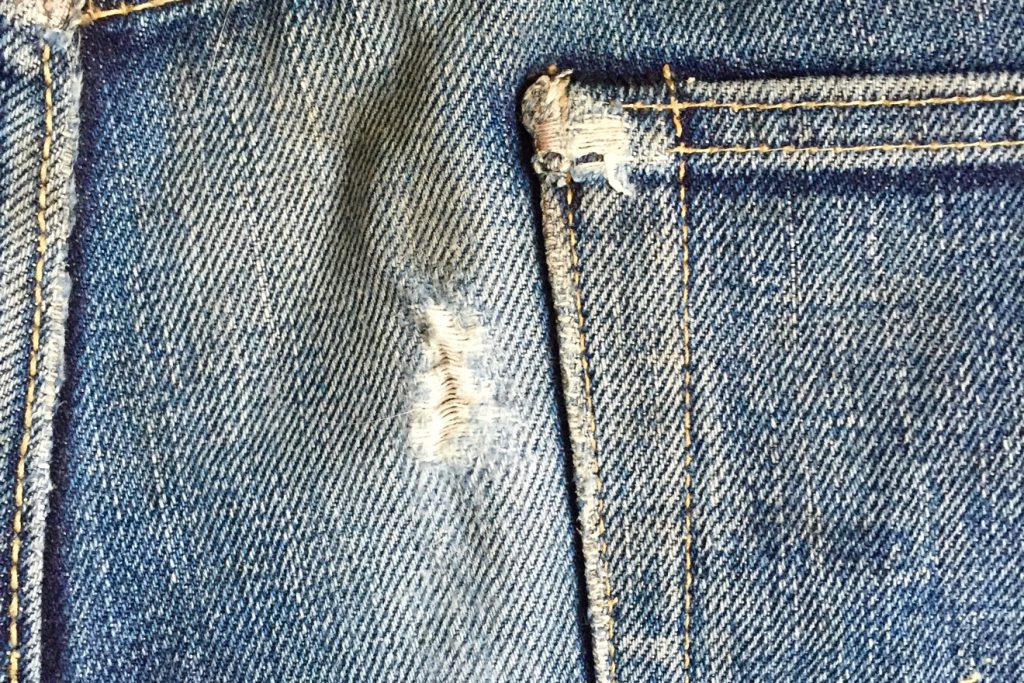
Raw Denim Made People Question How to Wash Their Jeans
A glance at Google Trend provides more details about the interest in denim laundering.
The term ‘how to wash jeans’ has been on a continual upwards trend since 2004. In the US, interest peaked in October of 2013. Globally, there’s never been more searches for the term than at the time of publishing this article (October of 2016).
So why this growing interest?
The same month that searches for ‘how to wash jeans’ peaked in the US searches for ‘raw denim’ peaked too. When you say ‘raw denim’ you also say ‘fade,’ and, to a large degree, the fade is determined by how you wash your jeans.
In the autumn of 2013, the surge of interest in raw denim made more people question how to wash their jeans. Especially since they were told by guys and girls in retail not to wash their jeans.
The problem with this advice is that consumers are usually not informed about the risks of not washing your jeans, besides them getting dirty and smelly.

The Problem With Not Washing Your Jeans
Back in August this year, my 18-year-old brother-in-law got a new pair of jeans; a pair of Nudie’s Steady Eddie, made from their now legendary 13.5 oz. Kaihara denim. Helping him soak and wash the jeans to ensure they’d last as long as possible, I was reminiscing about all the joy and frustration that denim has caused me.
Nudie was my gateway drug into raw denim. And I know their flagship Kaihara denim quite well; a pair Average Joes in that slightly tinted Kaihara denim was one of my first ‘fade projects.’ I wanted to wear them every day for six months without washing. When I got to around 145 days (almost five months), I couldn’t wait any longer. I washed them, probably at 60°C. And they came out nicely with quite prominent fades. But the wash revealed several breaks on the honeycombs.
Honestly, I felt a little betrayed. No one had told me that the sacrifice for high contrasts was less durability! I’d spent five months wearing these jeans religiously, and then they didn’t hold up!? What the f*ck!?!
That’s when I started questioning the premise for the wait-six-month-approach. It fails to ask the wearer what his goals with the jeans are and if he’s willing to sacrifice the potential lifespan of his jeans for high contrast fades.
After I’d realised that great fades may come at the cost of how long the denim’s going to last, I began soaking my jeans before I wore them. And I started advising others to do the same and to wash their jeans more often in general.
These days, denimheads know that if you don’t wash you might get insane contrasts, but you’re also more likely to get crotch blowouts and breaks anywhere the denim creases. It seems there’s been a shift away from the overly simplified no-wash mentality.
But what about the 99.9% of consumers who aren’t denimheads? What kind of denim washing advice should you give them? That’s what my 3-question tool for better jeans washing guidance answers.
Selvedge Masterlist Top Three Jeans
The list of our favourite Japanese selvedge jeans is long, but at the very top of it, you’ll find: Iron Heart 634S, Samurai S710XX, and ONI 622ZR.
The 3-Question Tool for Better Jeans Washing Guidance
This tool was built purposely for people who sell jeans. It’s designed to enable you to give your customers the right answer to the question of how to wash the jeans you just sold them.
The right answer depends on what kind of jeans we’re talking about. It depends on the fabric and whether they’ve already been washed or not. And it depends on the customer and his needs.
Washing guidance is an important service you provide, usually after you’ve helped the customer find the perfect pair of jeans. Done right and it’s a great way to build your credibility and position you as an expert. And that leads to repeat customers and referrals, so it’s worth prioritising.
I’ve divided the tool into three separate questions you need to break down. I’m deliberately exaggerating a bit to convey the message more clearly and to make it easier for you to train each of these skills. In real-life situations, once you’ve internalised these learnings, you’ll quickly start acting based on intuitions.
Question 1: How Much Does the Customer Know About Denim?
The first thing you need to consider is how detailed your guidance needs to be. This will be determined by how much the customer already knows about denim. The less your customer knows (and wants to know), the fewer details you need to include in your washing guidance.
The initial assessment builds on your interaction with the customer. If it’s your first interaction with the customer, or if you haven’t talked about denim care with him on previous encounters, think about how the customer reacted when you told him about how the jeans are made or you explained a particular detail. Did he seem genuinely interested? Or did he look like he wished you’d finish jabbering so he could get on with his day? You can also think about what kind of questions he asked? Or if he used any denim lingo?
There’s a scale that starts with the guy who’s girlfriend or wife—or mum—told him to get “new pants.” It ends with the uber-nerd who can take you out in Denim Jeopardy on any day of the week. Where your customer sits on that scale determines how much detail you can go into.
Question 2: What Does the Customer Want From the Jeans?
The second question looks into what the customer wants the jeans will look like months or even years into the future. When you wear and wash your jeans, the colour changes. This is known as ‘fading,’ which is one of the 22 essential terms anyone working with denim should know. How you wash hugely impacts the fade.
The easiest way to find out what kind of fade your customer is looking for is to ask. Does he want the jeans to fade in a certain way? Or would he prefer they didn’t fade at all? Or maybe he just “needs a pair of jeans,” which is code for “I don’t care how they fade!”?
If he’s buying raw denim jeans, and especially if he doesn’t have a lot of experience with fading and raw denim washing, ask him whether he wants high contrasts or not. And if he’s planning to wash the jeans at all?
Pro Tip for Retailers When Selling Raw Denim Jeans
Having a worn-in and washed pair of your most popular raw denim styles on display help the customer visualise how he can expect the jeans to evolve.
It doesn’t have to be the same fit. And a garment made from the same denim, such as a jacket, may also do the job.
If the customer wants high contrast fades, the general advice is to wash the jeans as little as possible and wear them as much as possible. It’s super important you inform the customer that when denim is worn for a long time without washing, it becomes brittle, which makes it break faster.
If the customer is looking for less pronounced fades—sometimes called ‘vintage fades’—the advice would be to wash the jeans like his mama would, which means often.
If the customer doesn’t want the jeans to fade, it might be a good idea to tell him that due to the way it’s made denim loses its colour with wash and wear.
Explaining Why Denim Fades
Explaining the ‘why’ of the fade quickly gets technical. Again, think about how much the customer actually wants to know before you go off on a rant about indigo dyeing. Information overload often scares customers away, especially when we’re talking about something customers “have to do” post-purchase. Here’s how you could explain why denim fades in just two sentences:
“Due to the way that most denim is dyed the colour pigments don’t reach the core of the yarn. When you wear and wash the jeans, the dyestuff gradually rubs off and the white core of the yarn becomes visible.”
If the customer asks, this process is call ring dyeing. You can learn more the dyeing process on pages 18-23 of Blue Blooded. Another great resource is Jenny Balfour-Paul’s book, Indigo.
Question 3: The Type of Jeans and How to Wash It
The answer to the third and final question enables you to deliver tailored washing instructions based on what you’ve learned about the customer’s needs from step 1 and 2. To do that, you need to consider the type of jeans you’re dealing with.
There are four types of jeans: unsanforized, raw sanforized, black and industrially-washed. And they’re not created equal when it comes to washing. Let’s look at each type and how to wash it.
How to Wash Unsanforized Denim Jeans
I love unsanforized jeans; it’s basically the only thing I wear. But it can be a bitch to figure out which size to get if you don’t know how much the denim shrinks.
Unsanforized jeans are also called shrink-to-fits because the denim shrinks up to 10%. It’s especially noticeable in the length as the legs don’t see as much stretch as the waist and thighs—and simply because the warp yarns are longer, which means 10% shrinkage equals more centimetres in relative terms.
If you plan to wash shrink-to-fits (which I would always recommend), buy them a little too big in the waist and a lot too long. Before you start wearing the jeans, give them a soak (a hand-wash without detergent). The warmer the water the higher the shrinkage. After the first soak, wash the jeans whenever needed with either hand-washing or machine-washing. If you want high contrasts, postpone machine-washing as long as possible.
If you plan to never wash a pair of unsanforized jeans, buy a size that fits. But be aware that an unplanned wash may see you end up with a pair of jeans that don’t fit. That’s particularly painful if you’ve spent months fading them. You should also be aware that if you don’t shrink unsanforized jeans before you start fading them, the honeycombs might end up not sitting right once you do wash them.
3 Pro Tips to Minimise Shrinkage of Denim
- Washing in cold water minimises shrinkage.
- Denim stretches when it’s wet. To stretch out in the waist, put on the jeans when still damp and walk around a bit. Don’t sit too much, and don’t be overly active, as the fibres are less durable when wet.
- To stretch the length, fold the legs, step on the hems and pull upwards slowly in a controlled manner. Be aware that this exercise might transmit colour onto the floor, so don’t do it on oiled wooden floors without any underlay.
How to Wash Sanforized Raw Denim Jeans and One-Wash Jeans
Sanforization is a fabric finishing process that eliminates shrinkage. Because sanforized raw denim jeans don’t shrink all that much, you’ll usually buy a size that fits from the get-go. The same goes for one-wash jeans, which have been washed once and thereby shrunken down in the factory before they’re shipped.
This means you don’t have to soak or wash sanforized raw denim and one-wash jeans before you start wearing them.
However, I would still recommend a pre-wear soak for sanforized raw denim jeans (hand-washing without detergent). But remember that this may give you less pronounced contrasts in the fade.
Like with unsanforized denim, high contrasts comes when you postpone machine-washing as long as possible and wear the jeans as much as possible. Just remember that the consequence is less durable denim.
How to Wash Black Denim Jeans
Although black denim in the context of this wash guide is defined as ‘sanforized raw denim that is dyed with sulfur instead of indigo’—in other words ‘black sanforized raw denim’—it requires washing advice of its own because customers usually don’t want their black jeans to fade.
If you don’t want your black denim jeans to fade, avoid washing as much as possible. When you have to wash, do it by hand and remember to add vinegar every time you wash!
In this particular case, you can skip the pre-wear soak, even though the jeans are raw, to avoid any colour loss. Just remember that the denim won’t last as long as if you do the soak.
Finally, when your jeans eventually start to fade—and they will—you can make the denim black again with domestic dyes like this one from Dylon.
How to Wash Industrially-Abraded Jeans
Industrially-abraded jeans are the ones that are already faded when you buy them. The process is technically called ‘garment finishing,’ but they’re also referred to as ‘prewashed jeans.’
Garment finishing covers a host of treatment techniques that emulate what happens when you wear and wash your jeans yourself. Industrially-abraded jeans are often washed in the factory and/or made from sanforized denim, so shrinkage usually won’t be a problem. And when they’ve been washed, they’ve already lost some indigo. What this means is that you won’t get a significant change in the colour.
There’s no reason you shouldn’t be able to machine-wash your industrially-abraded jeans. However, because they’ve been washed and/or abraded already, they won’t last as long as raw or one-wash jeans. And if they have rips on them when you buy them you should expect the rips to grow.
On the Hunt For Raw Selvedge Jeans?
Launched in 2011 by Thomas Stege Bojer as one of the first denim blogs, Denimhunters has become a trusted source of denim knowledge and buying guidance for readers around the world.
Our buying guides help you build a timeless and adaptable wardrobe of carefully crafted items that are made to last. Start your hunt here!
Share
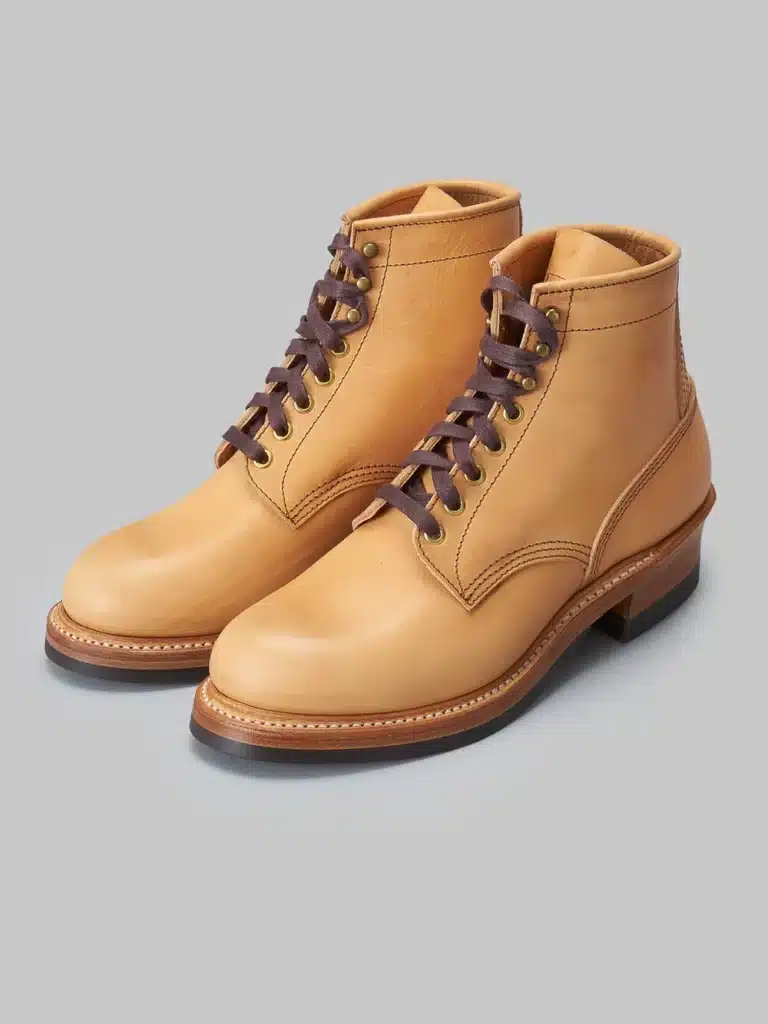






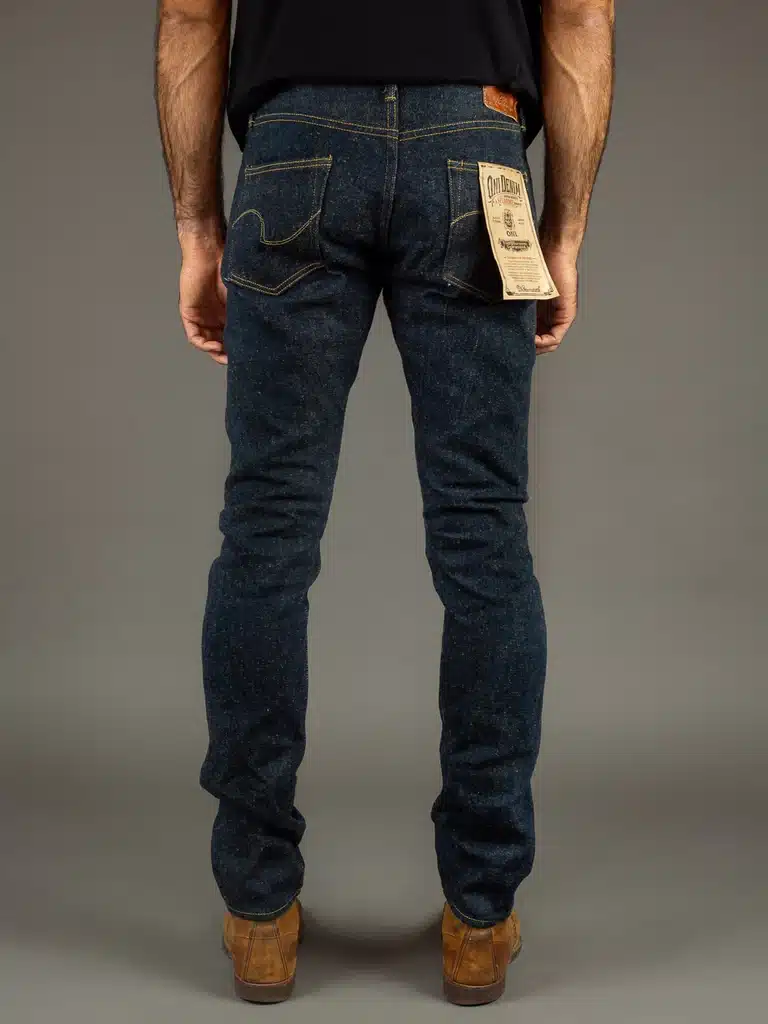




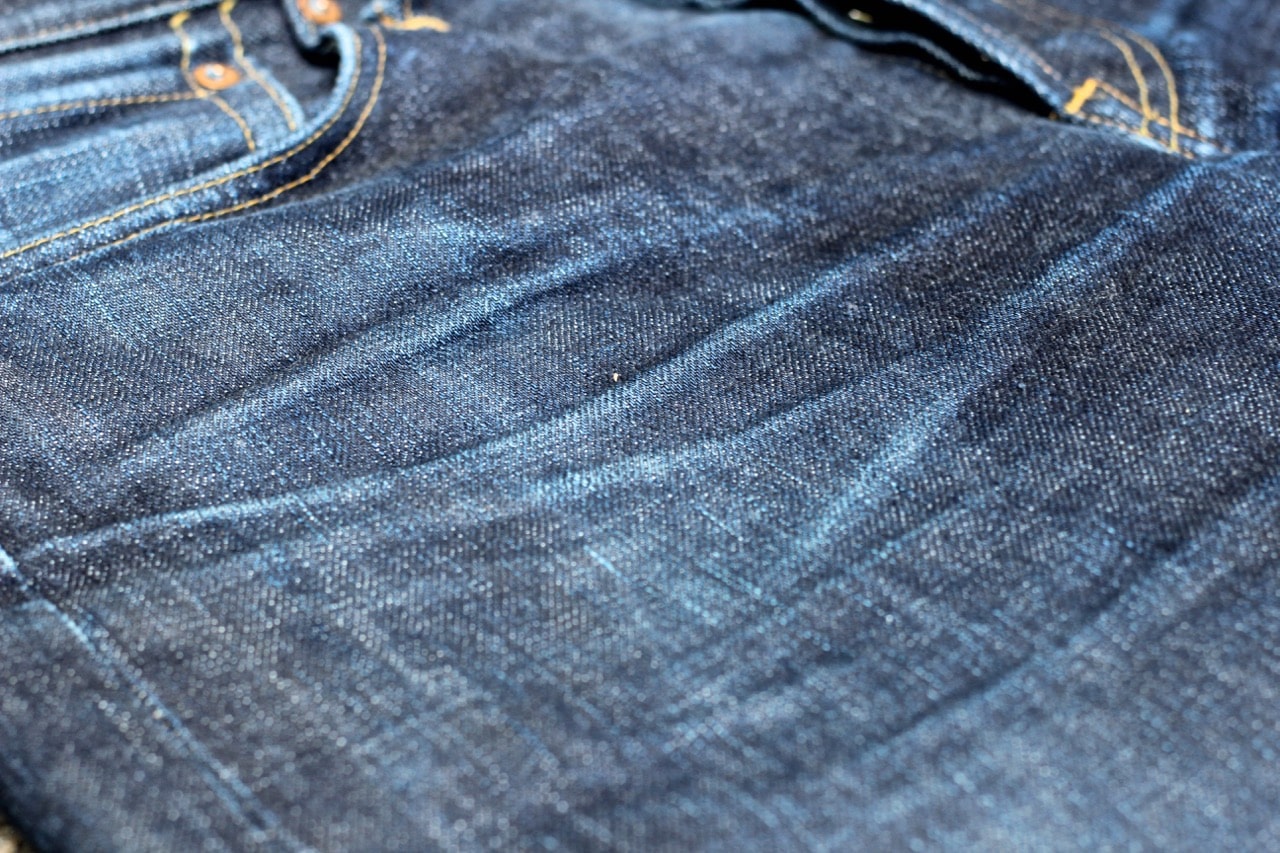
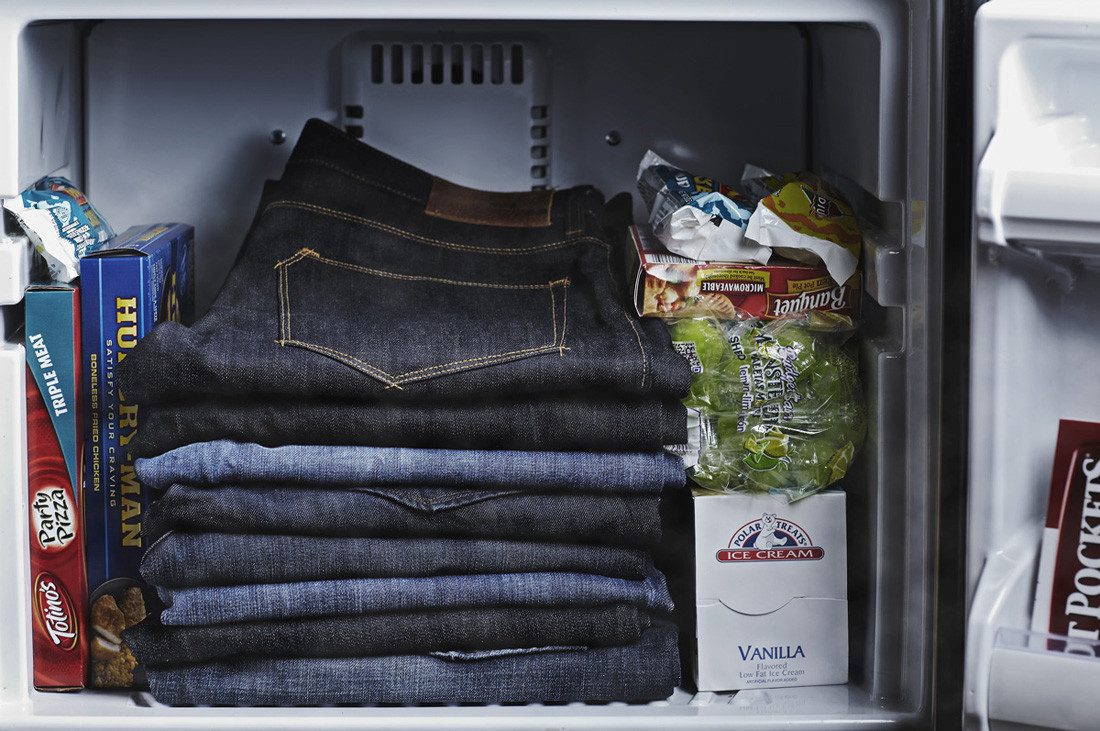

Thanks for providing such an awesome amount of information. I signed up for the wait list to enroll in your classes. This is right up my alley. I literally don’t own a pair of raw denim yet. I’m waiting on my first pair from Gustin. And have been drooling over the BDD Japanese line. I would like to know more about the trade offs of denim longevity. You say that not washing or doing the pre wear wash decreases the longevity of the denim. What causes this? How drastic are the differences? Thanks for the post. Off to read the rest lol.
Hi Ryan,
Thanks for the comment and your interest in what I do. Very happy to hear that DH plays a role in getting you into a pair of raws 😉
Regarding longevity, what I say is that not washing makes the denim rip quicker for most people. However, I pre-wear soak DOES make the denim last longer 🙂
Appreciate the thorough and excellent amount of information. Especially appreciate the wash your jeans insight. I’m always grossed out at the amount of “denimheads” I know that are odorous due to smelly jeans. Not smelling is more important than exact fades. Also the durability you mentioned. Why have these excellent pieces just to have them fail needlessly.
Also appreciate the mention of vinegar. Natural, biodegradable, and naturally cleans and kills bacteria. Excellent suggestion.
Thanks for the great article. I am not in the fashion industry, but found this extremely helpful. Great read, great info, and we’ll written.